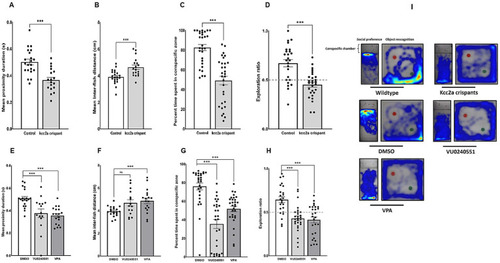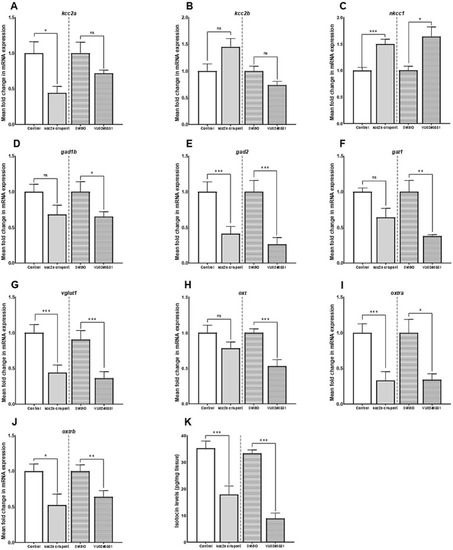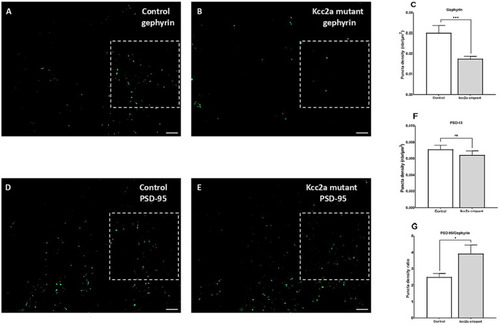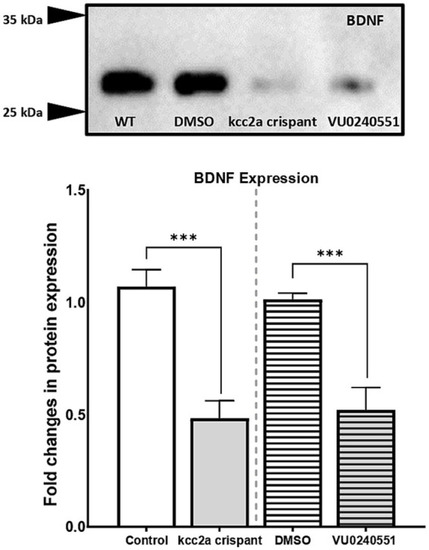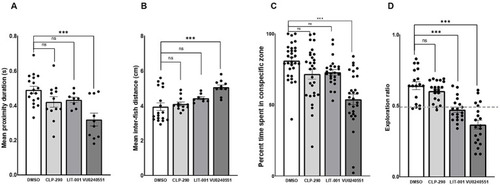- Title
-
Unraveling the socio-cognitive consequences of KCC2 disruption in zebrafish: implications for neurodevelopmental disorders and therapeutic interventions
- Authors
- Naderi, M., Nguyen, T.M.N., Pompili, C., Kwong, R.W.M.
- Source
- Full text @ Front. Mol. Neurosci.
|
Alterations in social behaviors and cognitive performance in |
|
The mean fold change in the mRNA expression level of |
|
Defects of excitatory/inhibitory balance in the |
|
|
|
Effects of CLP-290, LIT-001, and VU 0240551 on social deficits, measured by time spent in proximity to shoal members |

